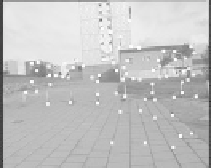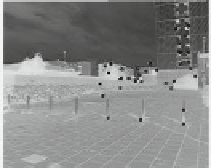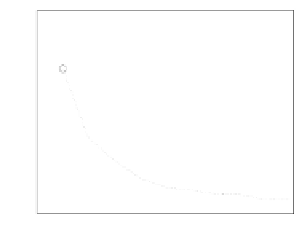Information Technology Reference
In-Depth Information
(a) 1st frame
(b) 30th frame
(d) 100th frame
Fig. 21
Video sequence of walking, turning corner, with the feature points superimposed
50
1
STK−based (w=7)
Gait−based (w=7)
STK−based (w=9)
Gait−based (w=9)
STK−based (w=7)
Gait−based (w=7)
STK−based (w=9)
Gait−based (w=9)
40
0.8
30
0.6
0.4
20
0.2
10
0
0
0
2
4
6
8
10
2
4
6
8
10
Frame separation
Frame separation
(a) Processing Time
(b) Retention of Features
Fig. 22
Comparison between the STK-based and gait-based framework in tracking for the
turning corner sequence (w - width of search window).
5.5
Summary of the Experimental Results
We have evaluated the proposed system experimentally. In general, the proposed
algorithm is capable of efficiently and effectively tracking feature points in varied
circumstances, while providing accurate motion parameters of the camera.
In the case of the synthetic checked targets, Table 1 shows that the gait-based
algorithm has RMS errors of 0.15 units less than the STK tracker on average.
Fig. 6 indicates that the gait-based algorithm results in errors of less than 0.5 de-
grees on average in the angular estimates. Changing the sample rates using the syn-
thetic checked targets with changing sampling rates, Fig. 8 demonstrates that the
gait-based algorithm allowed optimal recovery of transformations using every sixth
frame whereas the STK algorithm requires a frame-by-frame basis.
In the case of synthetic human motion using the games engine, Fig. 10 demon-
strates that the proposed gait-based algorithm has errors in roll estimation of 2.0
degrees less than the STK tracker. In the case of real image sequences, although
there is no ground truth data, the recovered texture maps show that the proposed
algorithm is subjectively better than the STK method (Fig. 17).




























































































































Search WWH ::

Custom Search